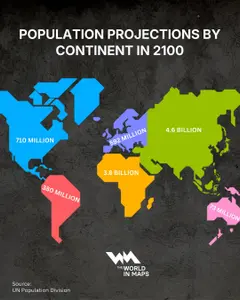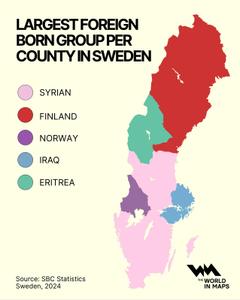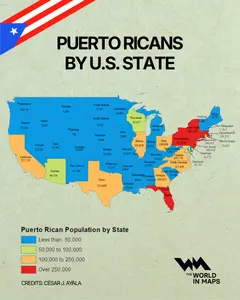maps

Maps / 1 day ago
Five countries that are situated on two continents
A handful of countries are uniquely positioned at the crossroads of continents. Five such nations, Indonesia, Russia, Egypt, Kazakhstan, Panama, and Türkiye, each straddle two continental regions. A handful of countries are uniquely positioned at the crossroads of continents. Five such nations, Indonesia, Russia, Egypt, Kazakhstan, Panama, and Türkiye, each straddle two continental regions. Indonesia, the world’s largest archipelago, stretches between Asia and Oceania, with the easternmost islands of Papua forming its easternmost reach. According to the CIA World Factbook, Indonesia encompasses over 17,000 islands, making its transcontinental footprint both vast and culturally diverse.

Maps / 4 days ago
Here is what the world’s population map could look like in 2100
New projections from the UN Population Division show that population growth will be heavily concentrated in Africa and parts of Asia, while Europe, the Americas and Oceania face slowdowns or long-term declines. By the end of this century, the global population will look dramatically different from the world we know today. New projections from the UN Population Division show that population growth will be heavily concentrated in Africa and parts of Asia, while Europe, the Americas and Oceania face slowdowns or long-term declines.

Maps / 1 week ago
The real meanings behind Argentina’s province names
Argentina's provinces have some of the most unexpected meanings. From “God’s Gift” to “Fire Land,” the translations open a window into the country's Indigenous roots, colonial history, and the cultural narratives that shaped the nation we know now. Understanding them comes at a time when Argentina is in global headlines, from major economic reforms to international debates over the Falkland Islands (Islas Malvinas). Many of the provinces carry names rooted in Indigenous languages such as Quechua, Mapuche, and Guaraní. Others have Spanish colonial or religious origins.

Maps / 3 weeks ago






